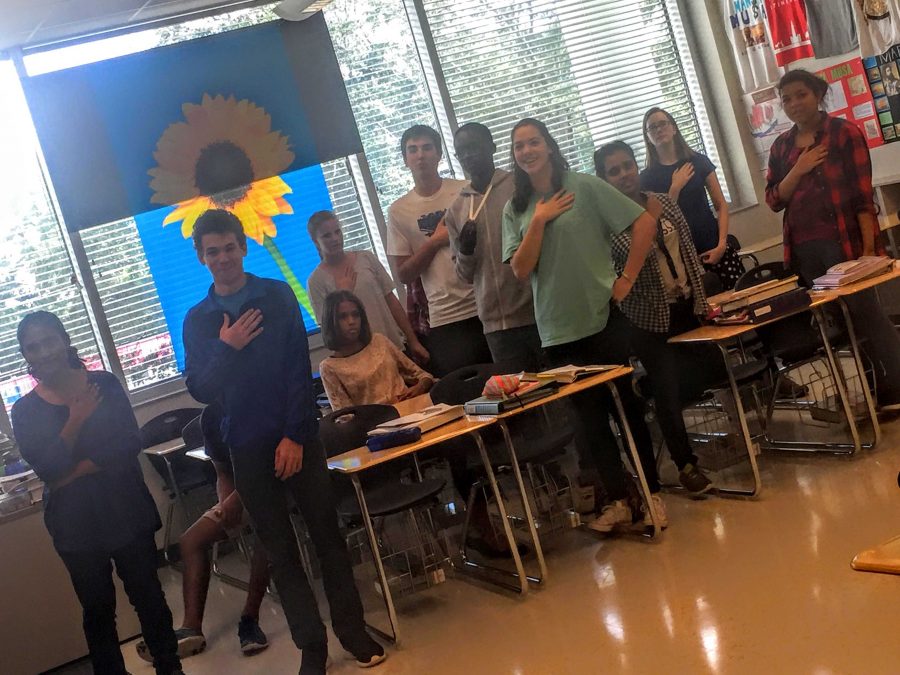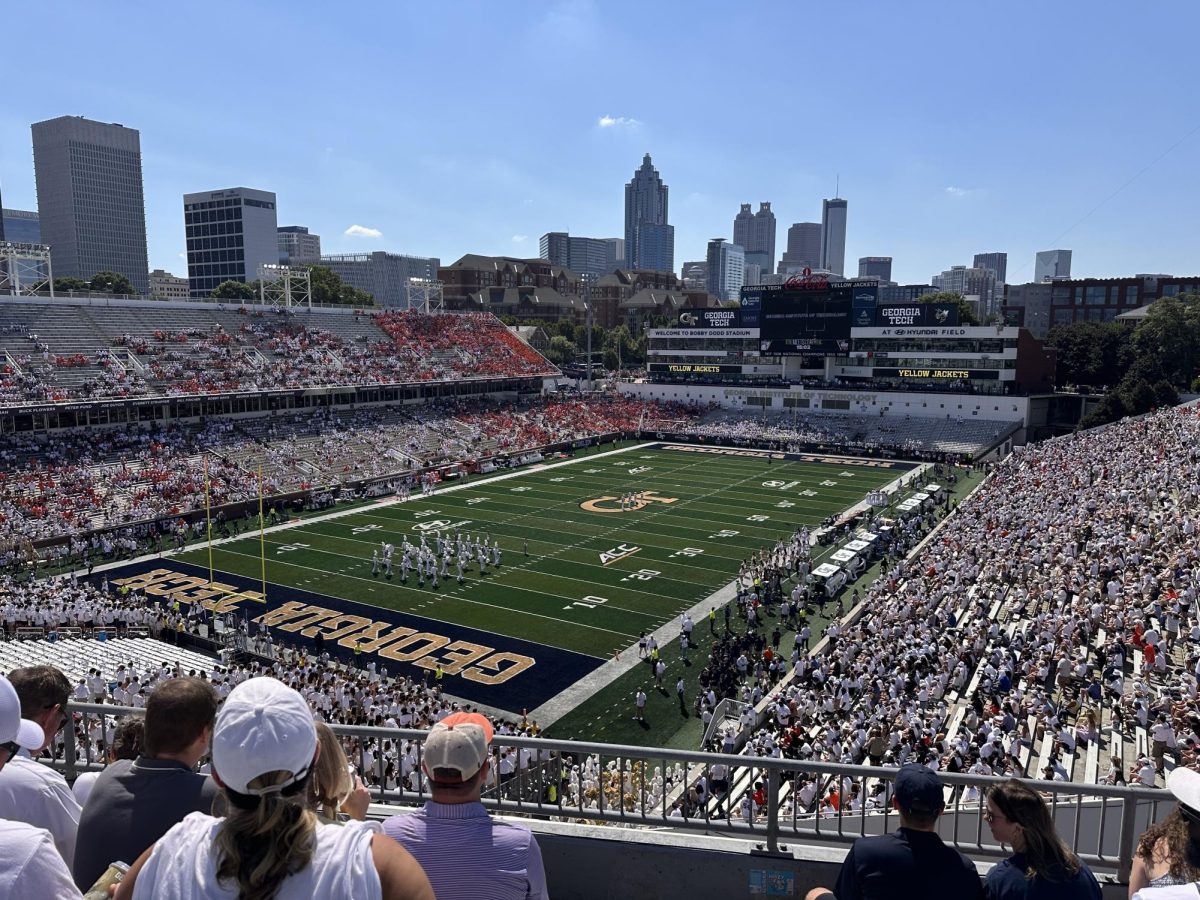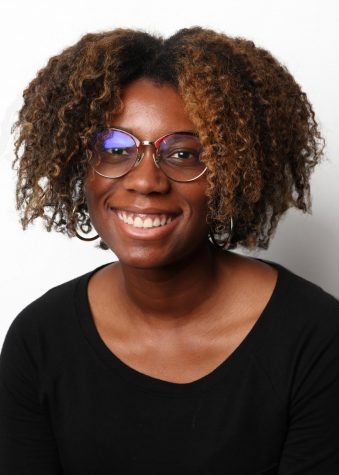All people have the freedom to sit or stand, but saying the Pledge of Allegiance in schools may be promoting the institution of standing.
Students in schools stand for a variety of reasons, whether out of respect for soldiers, because they were told to, or out of habit.
Places people may have heard the Pledge of Allegiance or National Anthem growing up was sporting events, public rallies, or school, where the majority people stand.
Some stand because it’s something they’ve always done or it was what others were doing. People may have just continued this habit.
“When I was five years old and moved from Bangladesh to Texas and the Pledge of Allegiance came on, everyone was standing and I was the only one sitting,” said sophomore Torsa Rahman. “Later a teacher pulled me aside and told me to stand, so I just continued to do so even when I didn’t understand what it meant at the time.”
More than half of the states require the Pledge of Allegiance to be played, although students are not required to say it.
“You have a constitutional right not to be forced to participate in the Pledge of Allegiance, nor should a student be singled out, rebuked, told they must stand, or otherwise be penalized for following their freedom of conscience.” said the Freedom From Religion Foundation.
In West Virginia State Board v. Barnette (1943), the Supreme Court ruled that requiring students to salute the flag and say Pledge of Allegiance in public schools violated the First and Fourteenth Amendments.
Presently, every morning, schools start with the pledge and moment of silence. Some teachers call for the students to stand and be silent. Some say they would still stand even if they weren’t told to do so.
“[I would still stand] because I have pride in my country,” said junior Betsy Wilcauskas.
Some feel that standing is a representation of your allegiance to your country and pride in it.
“I believe students in school should stand as a sign of respect for those who died for this country,” said social studies teacher Jennifer Tinnell. “We are in a government building supporting our hopes for a better education and future, therefore should support the government that provides and protects us.”
A portion of students find not standing is disrespectful to the American soldiers. Soldiers died fighting for our country and students feel that they should be honored when we stand and place our hands on our hearts, as well as show that we are proud to be in America.
“I feel like anyone living in America should be proud to an American and standing up is just showing [your] support,” said Wilcauskas.
A number of Chamblee students and teachers are from different countries and are proud to be in America. They stand to show their support of their nation.
“Originally, I’m from another country, but I have become part of this nation,” said French teacher Wanddolff Bretous. “I am an American [so I stand].”
However, as children go through school, they learn more about the country and the world and are able to make educated decisions about whether they should stand or sit.
It is a belief that the choice is up to oneself and their personal beliefs. Junior Jaden Brooks doesn’t feel that she has justice in America; therefore, she does not stand.
“[The pledge] is supposed to talk about the freedom of the people and the justice we’re supposed to have, but we don’t have that.” said Brooks. “My race [African-Americans] as a whole does not have justice.”
The students who do not stand choose not to because they know that they have the right and freedom to stand or sit during the pledge for whatever reason.
Olympians and professional athletes have been the source of much controversy when they have not placed their hand on their heart while the National Anthem was played.
Colin Kaepernick chose not to stand in protest of racism and police brutality. Gabby Douglas did not salute the flag, but she claims she was overwhelmed, but the date on her medal ceremony fell on the anniversary of the Michael Brown shooting, provoking speculation of her silent protest against police brutality and acting with Black Lives Matter, much like the 1968 Summer Olympics when Olympians Tommie Smith and John Carlos raised the Black Power salute on the podium.
“I think it’s okay if athletes don’t stand, even if it’s for a personal reason or movement,” said sophomore softball player Angela Witherby. “They’re regular people like us and have a choice. I didn’t place my hand on my heart at a game and people looked at me, but I just didn’t at that moment and [it] shouldn’t have mattered.”
In contrast, there can be occasional peer pressure to stand during the pledge, even if it is against one’s beliefs.
“People look at you [when you sit] and can pressure you into standing [against your beliefs],” said sophomore London Millender.
Nevertheless, some students are indifferent. When the bell chimes at 8:15 and the pledge begins, they simply rise from the seats and mumble the pledge, a part of their daily routine, neither moved by the notion of pride for their country, respect, nor protest to sit.
According to a survey, on average, teachers rate students as being mostly quiet during the pledge They stand and listen, but very few actually say the pledge or place their hand on their heart.
Furthermore, after the pledge, students pause for the moment of silence, which took the place of prayer in schools in the 1980s and still is in use today, though most students do not use the supposed sixty seconds of silence to pray or reflect.
According to Chamblee teachers, students pay attention for the pledge, but some fidget around idly during the moment of silence, though they are quiet.
“No one pays attention to the silence or does anything,” said Millender. “It’s not significant.”
“At this age and in such a large setting, I don’t know that a moment of silence would be effective,” said Tinnell. “It is a very personal thing and many students are not mature enough to understand the true meaning.”
However, some students perceive the moment of silence as necessary in today’s school systems. Though they may not use the time, it has always been there and some may need a time to reflect or use it for other personal purposes.
“Certain people believe things and they use [the moment of silence] for whatever they believe in, so for those certain people it has a purpose,” said Brooks.
Some teachers have observed students who do participant in the moment of silence.
“I have had one case and she told me in advance [what she intended to do during the moment of silence] and I respected her rights to take a stand for a cause in which she believed in,” said Bretous.
Of those who are not actively participating or not paying attention, they are quiet and respectful, allowing those who do the peace to pay respects or reflect as they may.
“I bow my head [during the moment of silence] to show respect for those [soldiers] who died [overseas],” said freshmen Guliana Almeyda.








